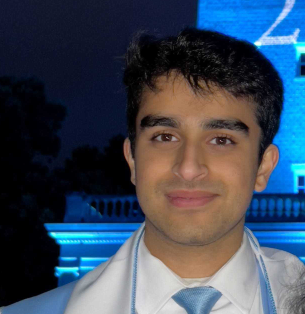This Q&A highlight features Abhay Zala, an Honorable Mention in the 2022 CRA Outstanding Undergraduate Researchers award program. Abhay finished his undergrad from the University of North Carolina (UNC) at Chapel Hill and is now pursuing a Master’s in Computer Science there.
Abhay Zala, B.S. in Computer Science, University of North Carolina, Chapel Hill
What brought you to computing research?
Through high school, I was fascinated with how products like Google Home, Siri, and Alexa work and how they could be better. At the time, especially, those products just answered basic questions or redirected you to Google and, you know, that’s not all that smart. I recognized that I wouldn’t really be able to come up with ideas to improve them without knowing how they work. When the time came to go to university, I saw UNC had a lot of AI research; it’s kind of why I chose to go there.
How did you connect with your undergraduate research advisor?
Right before my freshman year started, Prof. Mohit Bansal sent an email to the Computer Science majors saying that they were looking to hire somebody. They needed some help with the graphics for their project, so one of the required skills was the ability to create 3D simulation environments. One of the easy ways of doing that is using a game engine like Unity, where you can build an environment for an AI rather than for a person. Through high school, I worked with Unity, creating my own little games for fun, or for competitions and whatnot. I was well acquainted with the software and knew how to adapt that knowledge really quickly to what they wanted. I thought, well, AI is something I’m interested in, so it wouldn’t hurt to send an email to express interest and get more information.
What was the hiring process for that first position like?
After sending that first email, I had a few one-on-one meetings with Hyounghun Kim, the grad student leading the project. In these meetings, we got to know each other and made sure we were clear about the required skills and project details. After that, it got a bit more technical, and they basically required me to do a mini project, similar to the actual research project, but scaled down, to demonstrate my ability to actually contribute. I went back and forth asking for clarification and refining my project until I had something I was happy with. The process was quite competitive and it took two to three weeks from when I first saw the posting to receiving the job offer.

Can you tell us about your project?
This animation shows examples of a robot following instructions and navigating in a 3D simulation environment created by Abhay Zala.
It is challenging for robots in large, outdoor environments to follow natural-sounding instructions, such as “Turn around then go left between the blue and brown buildings. Go past the silver dumpster and collect the striped yellow ball next to the mailbox.” To expand the real-world applications of robots, we believed it was crucial to solve the problem of outdoor navigation and object placement.
Since prior work had mostly focused on much smaller indoor environments, we collected a new dataset of English and Hindi language instructions for potential target locations and tasks in our 3D simulation. After creating the dataset, we developed an AI model that, given instructions, generates actions for a simulated robot. Our model navigates quite well, but still performs much worse than a human facing the same task. We would be curious to see how more recent models perform on our dataset, which is now openly available. We presented our findings at EMNLP 2020.
We noticed you still work with the same supervisor; how has your role changed over time?
After my first project, I was co-first author on the next two papers. I led a section of the paper and another student led the other section. In the part I led, I had full control over what direction I was heading—obviously advised by my teammates. With my most recent paper, I led a good majority of the paper, as opposed to maybe half. I don’t anticipate ever leading 100% of a paper, just because I think having people in charge of what they’re good at is important for the quality of the research. One challenging thing is, if one person is better at some specific area, they have to teach the team so you can have multiple sets of eyes on everything. But it’s definitely overcomeable; it is important to have a clear explanation of what you did and how you did it, which makes it a lot easier to communicate.
Do you have any advice for other students looking to get into research?
It definitely can feel quite challenging, from getting in to getting your work published, but I think it is worth it in the long run; don’t be discouraged by the challenge.
— Edited by Yasra Chandio and Nadia Ady
